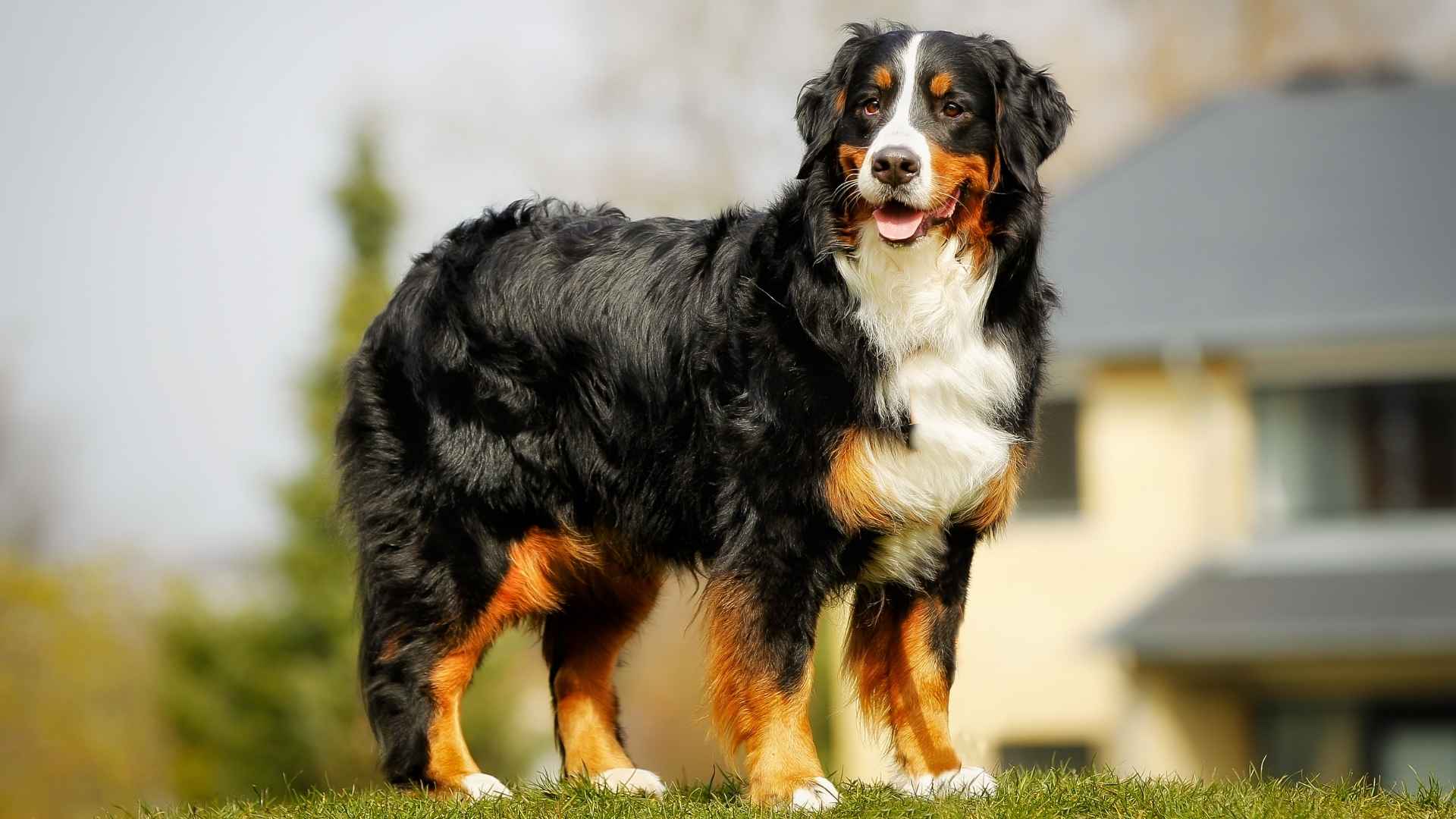Have you seen the news? China’s wild winds are flipping umbrellas, toppling scooters—and, let’s be honest, almost carrying off the small dogs. But the big ones? They’re like furry sandbags with paws. Built to hold their ground, even when the weather’s throwing a tantrum.
So what makes these pups grow to such colossal sizes? It’s not just bottomless kibble bowls. It’s a masterclass in biology: selective breeding, hearty genetics, and a metabolism that practically eats gravity for breakfast.
Of course, when your “lapdog” outweighs your nephew, you start living life differently. Say goodbye to fragile furniture and hello to vacuuming enough fur to knit another dog.
In a world where pocket pups once ruled Instagram, the trend has shifted—big dogs are the new it-pets. They’re striding through typhoons and TikToks like majestic, drooly superheroes.
If your dog doubles as a footwarmer and a storm anchor, this guide is your survival kit. Let’s dive in—before another gust hits.
10 Full-grown Big Dog Breeds
1. Komondor

This isn’t a mop. It’s a dog. A giant dog breed with a dreadlocked coat so dense, burglars might walk right past it—until it barks. Originally bred to guard livestock, the Komondor’s lion-like mane isn’t just for show—it’s armor.
From fuzzy pup to towering adult, this majestic breed grows fast and grows huge. I’m talking “you need a bigger couch,” huge. Its strong sense of duty makes it one of the best guard dogs, but you’ll need to outsmart it at training time.
Independent? Try stubborn. This dog will decide if your command is worth doing. Early socialization isn’t optional—it’s damage control in fluff form. They don’t bark often, but when they do, it’s like thunder rolling across the plains.

The coat? Oh, sweet chaos. It doesn’t shed, but it needs hours of TLC—or you’ll have dread-mess, not dreadlocks. Invest in a professional groomer or adopt a minimalist aesthetic.
Despite its intimidating size and aloofness, it’s shockingly affectionate with family—and surprisingly gentle with kids. Just don’t expect cuddles; they’ll sit near you like a woolly bodyguard.
Purina explains that this is not a dog for your tiny apartment. It needs enough space, a job, and someone who understands ancient breeds with a serious vibe. You’re the boss—if you can prove it.
If you like your large dog breeds weird, wild, and wonderfully independent, welcome to Komondor country. Good luck—and keep a lint roller handy. Or ten.
2. Bernese Mountain Dog
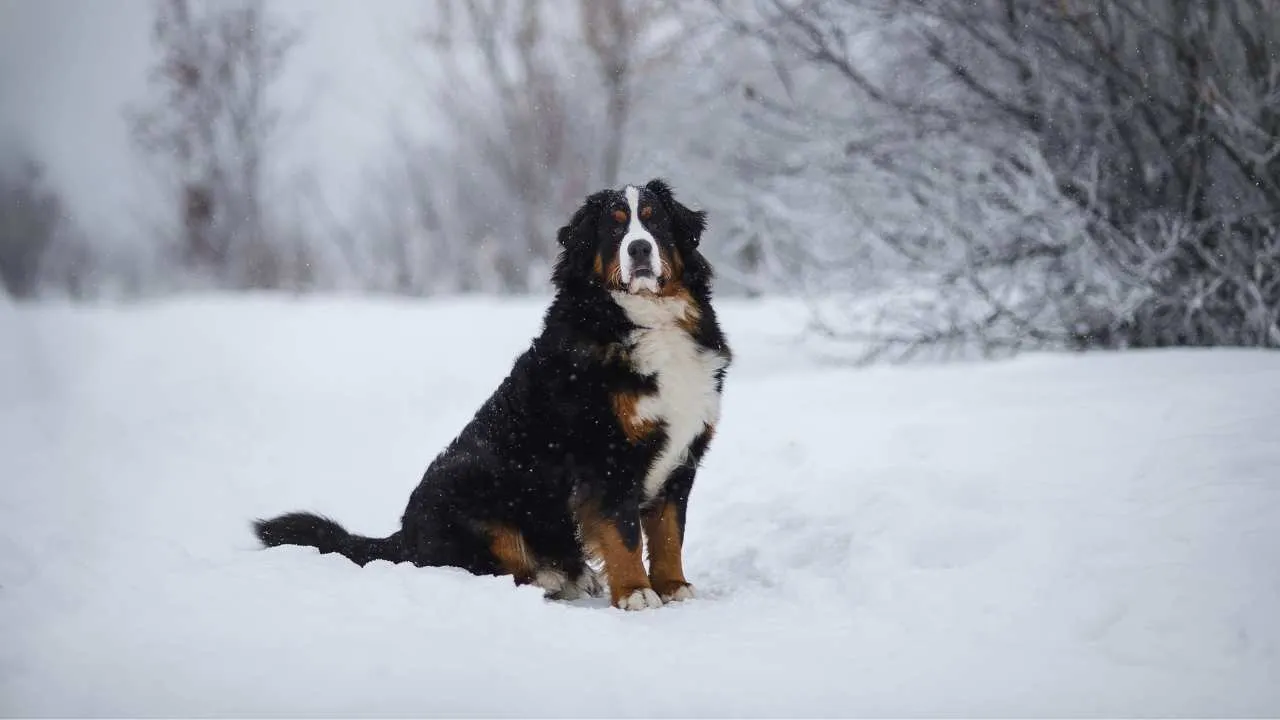
This fluffy beast is basically a walking, drooling teddy bear—except it’s a giant breed with a work ethic that would make your boss cry. Originally bred to haul cheese through the Swiss Alps, now it just hauls snacks off countertops.
That thick double coat isn’t just for snowstorms—it’s a commitment. If you’re not ready to brush out half a blizzard weekly, rethink your life choices. Or at least your vacuum budget.
They grow up fast—from adorable floof to large-stature love machine. And while they look like stoic philosophers, they’re total goofballs. One minute majestic, next minute faceplanting in mud.
They’re good-natured, loyal, and ridiculously sweet with children. You want a family dog? This is the poster child. Until they try to sit on your lap and break your legs in 3.2 seconds.
Training is easy—unless you’re boring. These dogs need mental stimulation and praise, not drill sergeant vibes. Food bribes help, too.
Health-wise? Yeah, heartbreak. They don’t stick around as long as they should. Watch out for hip issues and say no to sketchy breeders!
Final word: They’re perfect companions, if you can handle a little drool, a lot of fur, and a lifetime of loving stares that melt your soul.
3. Rottweiler
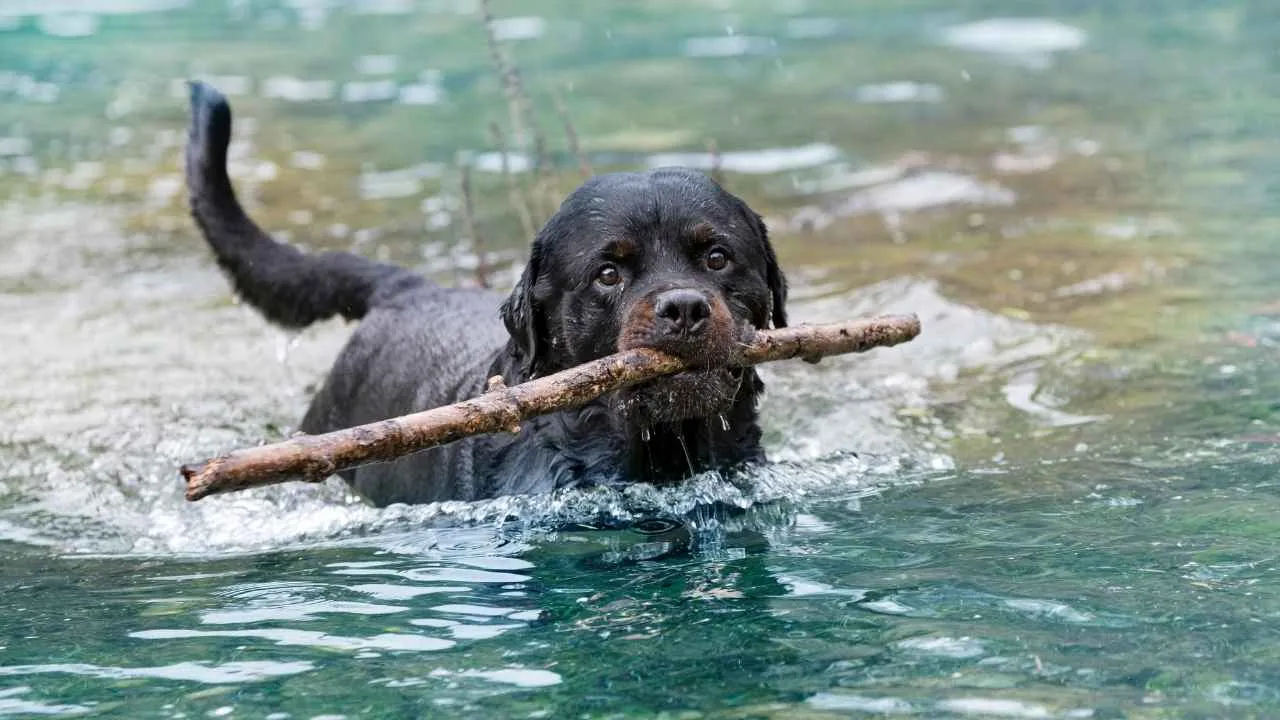
Rottweilers aren’t here to play fetch—they’re here to guard your house, your soul, and probably your snacks. Originally bred as working dogs and cattle herders, they now moonlight as couch protectors and shadow bodyguards.

That muscle? All-natural. This large dog walks like it owns the block—and probably does. They grow fast, hit large breed status quickly, and flex their strong-willed charm all over your living room.
They’re not aggressive—they’re discerning. Early training and early socialization are musts unless you want a 130-pound toddler with opinions. Boundaries = sanity.
Petplan reveals that Rotties are secretly softies with their owners. Loyal to a fault, protective without the drama, and cuddle monsters—if you earn it. Strangers? They’ll pass.
Exercise isn’t optional—it’s mandatory. Without moderate exercise, they’ll invent hobbies like eating your baseboards or practicing parkour on your sofa.
They prefer a confident leader who sets the rules and sticks to them. Consistency wins hearts—and obedience.
Bottom line: This majestic breed needs respect, training, and lots of belly rubs. Bonus if you can teach it to stop hogging the bed.
4. German Shepherd
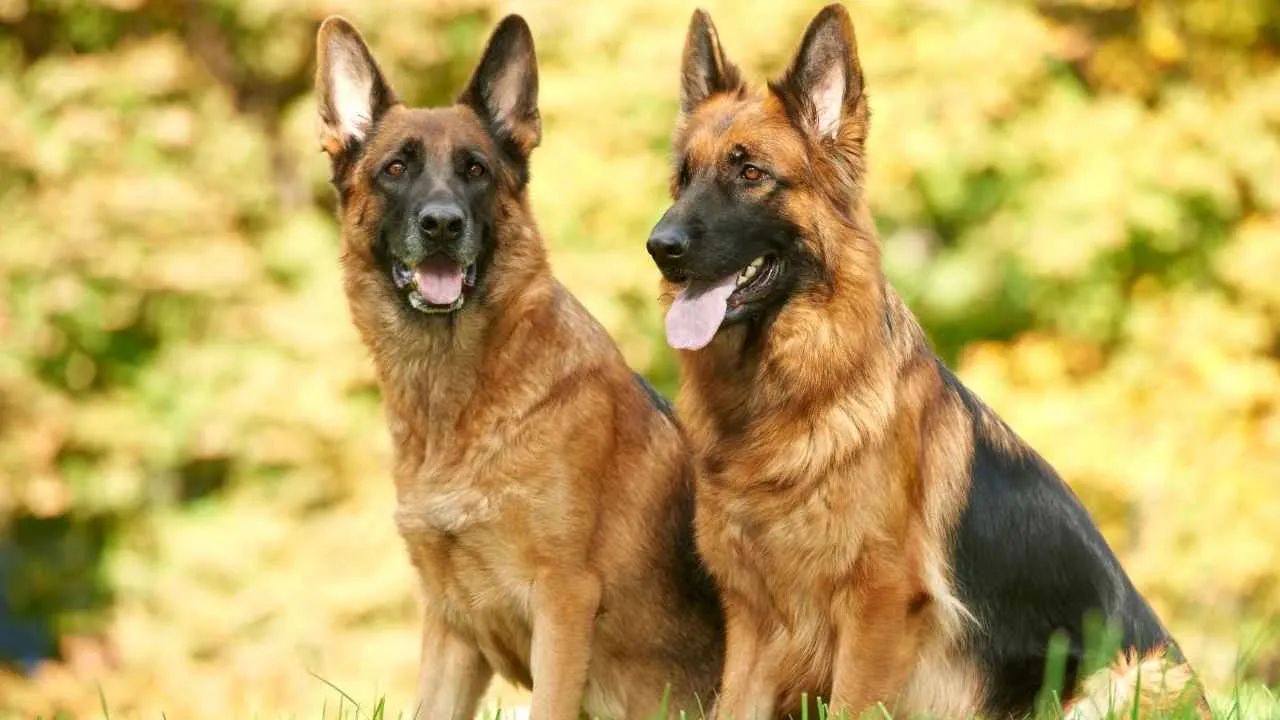
German Shepherds don’t follow trends. They set them. They’re the CEOs of the working dogs world—intelligent, driven, and probably judging your posture right now.
They hit large dog status faster than you can say “puppy class,” and their growth spurts are legendary. One day, they’re cute fluffballs, the next, they’re outrunning you at the dog park with military precision.
They live to work, love a mission, and will guard your house, your cat, and your Netflix password. With the right training, they’re unstoppable. Without it? Chaos in fur form.
Training isn’t just smart—it’s survival. These dogs are loyal, protective, and love to learn. Skip early socialization, and you’ll meet their anxious, barky alter ego.
They shed like it’s their part-time job. That thick double coat is stunning—but it will be all over your leggings. You’ve been warned.
They’re surprisingly affectionate with family—and polite-ish with other dogs, if introduced right. Don’t rush it.
If you want a dog who thrives on structure, thrives with owners who lead, and occasionally stares into your soul… you’re in German Shepherd territory now. Welcome.
5. Doberman Pinscher
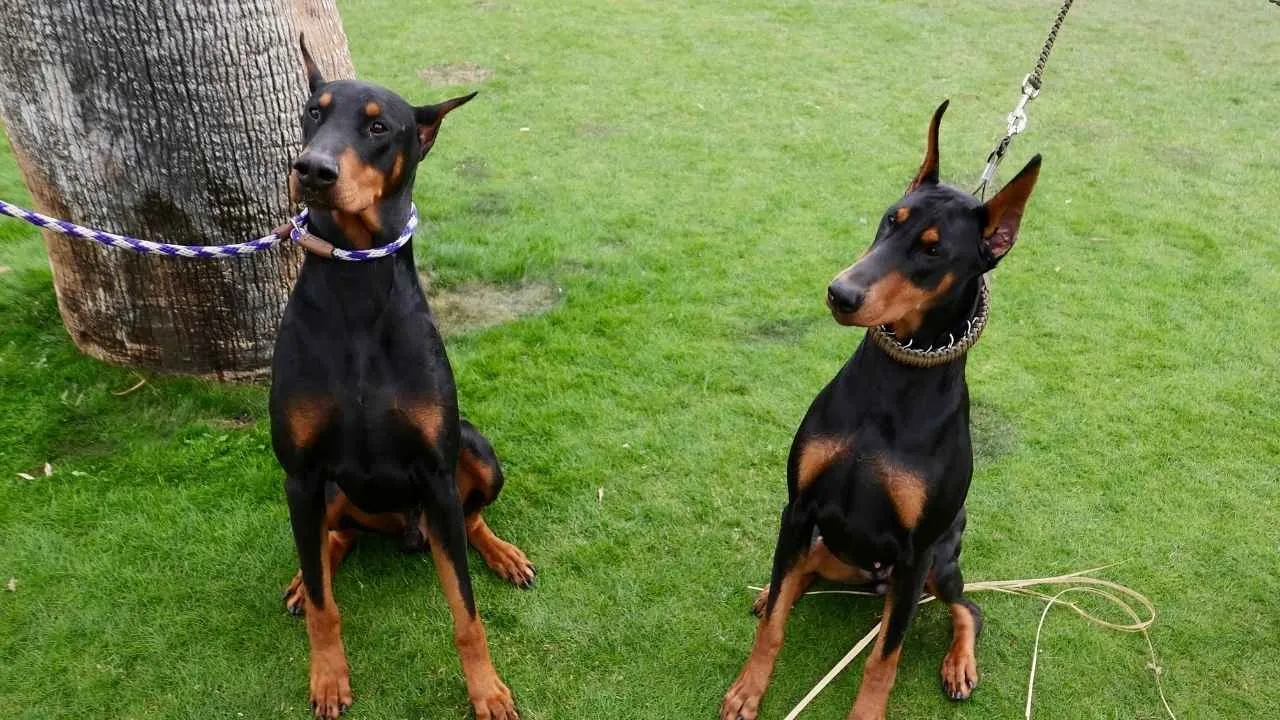
This dog doesn’t walk—it struts. The Doberman is pure sleek muscle and IQ points, a large breed that makes you feel safe and slightly underdressed. Originally bred to be a personal protector, it still takes that role very, very seriously.
Early training? Mandatory. These brainiacs don’t do well with laziness or inconsistency. Use positive reinforcement, avoid harsh commands, and please ditch the alpha-theory nonsense. It’s 2025. We train with empathy now.
Dobies are loyal to their core and, when raised right, total goofballs at home. Yes, they’ll alert you to strangers, but they’re not the bitey monsters the movies made them out to be. More like overqualified security guards who moonlight as comedians.
Exercise is life. Mental puzzles, agility courses, flirt poles—you name it. A bored Dobie is a redecorator. On your couch. And possibly your drywall.
Health check: Watch for heart issues (DCM) and always choose registered breeders with clear testing. Vet visits = love, not luxury.
Big tip? Invest in a cozy jacket. These sleek giants feel the cold and won’t pretend otherwise. The sass is real when it’s under 50 degrees.
6. Afghan Hound
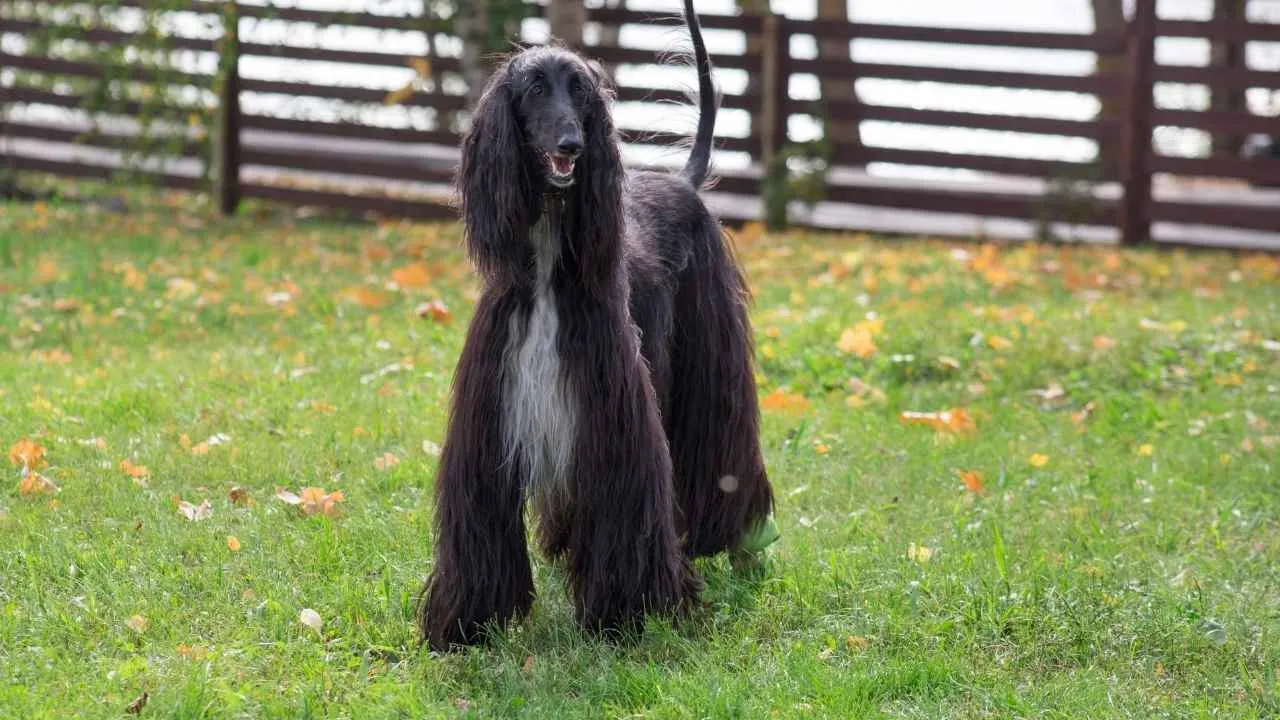
This isn’t just a dog—it’s a runway model that decided to slay in your living room. With flowing locks and a stare that says, “You can’t afford me,” the Afghan Hound is the majestic breed you didn’t know you needed.
According to AKC, despite their aloof vibe, they’re hilarious. Like, drop-the-zoomies-in-a-gown kind of hilarious. But training? A journey. They’re smart—just not always interested. Start early training and keep it upbeat, or you’ll be negotiating with a diva.
They’re more cat-like than clingy—happy to lounge like royalty but still down for a burst of moderate exercise. Secure yards are a must—these ex-sighthounds can run like the wind (and ignore every single recall).
Don’t underestimate that thick coat. It needs regular brushing, or you’ll end up with dreadlocks that aren’t quite Komondor chic. Grooming is non-negotiable—start early, make it spa-like, and reward with liver treats.
They’re affectionate in a “you may now touch me” kind of way. Great with family, neutral with other dogs, and surprisingly calm indoors—just don’t expect full-time snuggles.
Fun fact: Underneath the glamour, they’re one of the oldest breeds on Earth—ancient royalty. Respect is earned, darling.
Your job? Keep things light, stylish, and structured. You’re not an owner—you’re the entourage.
7. Beauceron
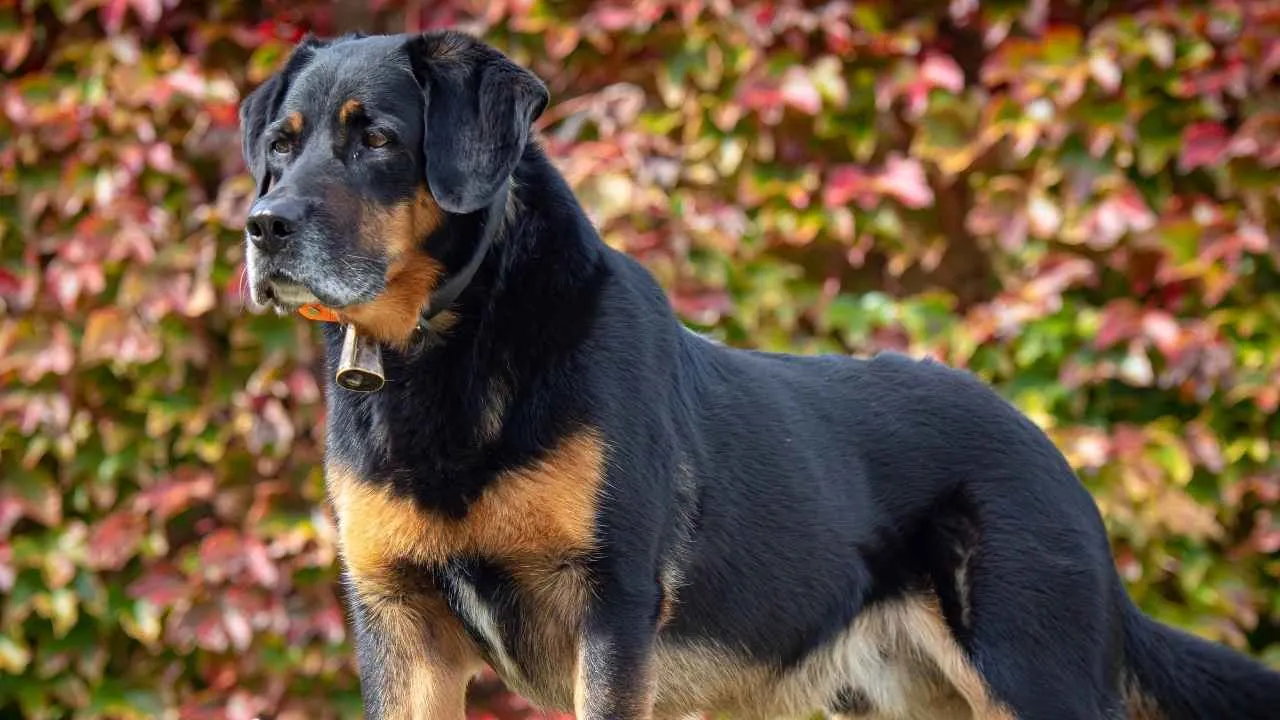
Ever wanted a dog that looks like it’s part superhero, part soldier, part philosopher? Enter the Beauceron. France’s best-kept secret in the giant dog breed world—tall, tough, and way too smart for your nonsense.
This is not a beginner’s dog. Orvis reveals that originally bred to herd sheep and cattle, the Beauceron thrives on structure, activity, and owners who lead with clarity, not chaos. Think of them as the CEO of your household—if the CEO also ate shoes.
Training starts early and never really ends. Use their strong sense of duty to your advantage. Reward-based methods, confidence-building, and dog sports? Chef’s kiss. Skip it, and you’ll be outmaneuvered by a dog smarter than your last three exes.
They’ve got stamina for days—daily long walks, scent work, even pulling carts if you’re feeling vintage. And yes, they’re good with kids if raised properly—but teach the kids too. Respect is a two-way leash.
Health-wise, they’re pretty hardy for large breeds, but keep tabs on hips and bloat. Pro tip: Slow-feed bowls are a game-changer.
They’re loyal, protective, and calm as a monk after a jog, when properly exercised. Without that? They’ll repurpose your living room as a canine CrossFit gym.
Bottom line: Give this dog a job, a routine, and some space to shine—and they’ll give you a partnership worthy of legends.
8. Chesapeake Bay Retriever
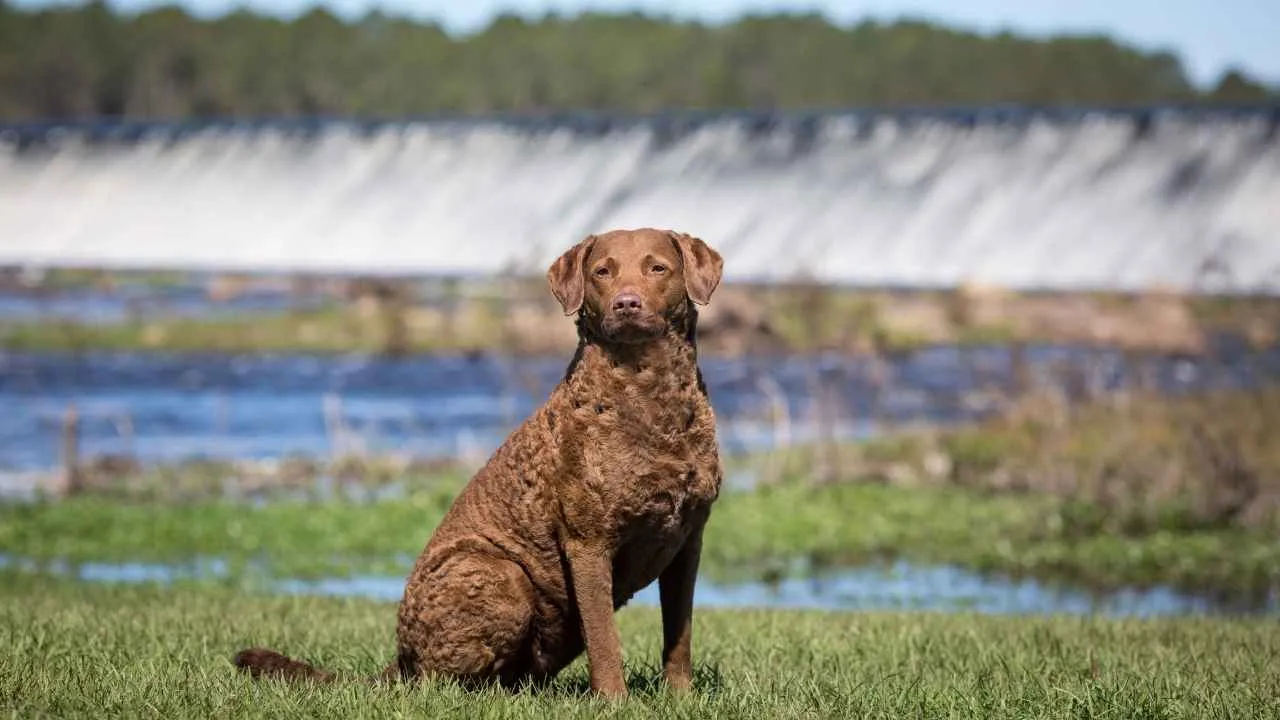
This isn’t your average water-loving retriever—it’s a tough-as-nails duck dog with webbed feet and a mind of its own. Originally bred to plunge into icy waters and haul birds like a beast, the Chessie thrives on grit and gusto.
Forget people-pleasing. This large dog breed is confident, stubborn, and always five steps ahead. Training takes patience, creativity, and probably a pocket full of salmon jerky.
They love moderate exercise, but don’t confuse that with “lazy.” A tired Chessie is a good Chessie. A bored one is redecorating your home in earth tones (aka mud).
That dense, oily coat? Waterproof and wild. Minimal brushing needed, but prepare for The Shedding Season™. Your floors will never be alone again.
Socialization is critical—early and often. They can be protective, reserved with strangers, and full of opinions. Don’t raise a grump. Raise a legend.
Family-friendly? Totally—if the family includes hiking boots, towels, and a vacuum that fears nothing.
This working dog is built for action, purpose, and loyal companionship—just don’t expect cuddly obedience. Expect results.
9. Briard
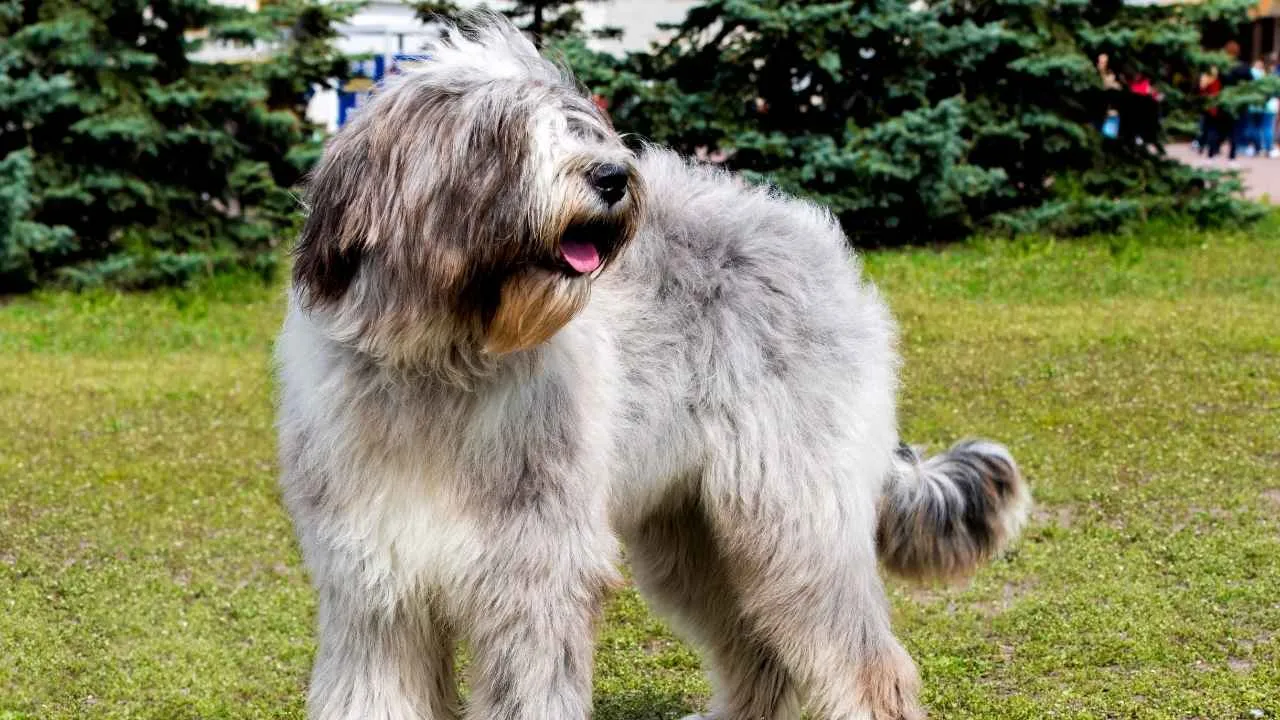
Fluff meets function. The Briard is a large breed herder with brains, beauty, and a lion-like mane that belongs on a medieval tapestry. Also? It can outthink you. Probably already has.
Omlet mentions that originally bred in France to guard flocks, these dogs are all-in on family, fiercely loyal, and rock that “velcro dog” vibe—just, you know, plus 90 pounds of fluff and opinions.
Early training is crucial. They’re intelligent, yes, but also stubborn in that “Sure, I heard you, but I had a better idea” kind of way. Keep sessions short, fun, and frequent.
Exercise? Yes. Herding kids? Also yes. They need a job—or they’ll invent one, like reorganizing your shoes with their teeth. Mental stimulation is not a bonus—it’s survival.
That coat? Gorgeous. Also relentless. Weekly brushing and professional grooming = peace. Or at least less tumble-fur.
Great with children and other pets when socialized correctly. Without it? They might start managing your guests like livestock.
A Briard’s not for everyone, but for those who get the, they’re magic wrapped in fur and attitude.
10. Akita
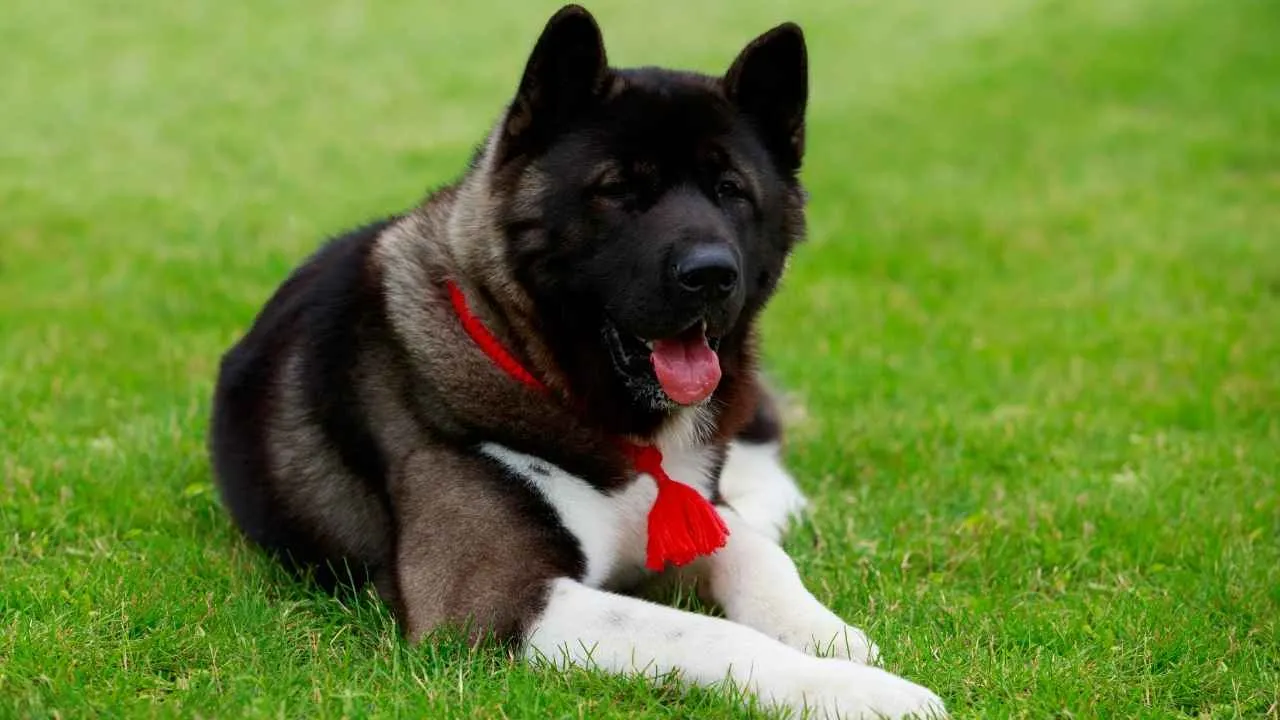
Dignified? Yes. Cuddly? Sometimes. Intense? Always. The Akita is basically a stoic samurai disguised as a giant dog breed, and it doesn’t do “casual.” You earn this dog’s trust—and once you do, it’s ride or die.
Originally bred in Japan for royalty (and bear hunting, no biggie), this majestic breed is calm, strong, and silently judging your every move. Don’t take it personally. Take it as motivation.
They grow into large stature fast and with serious strength, so early training is a non-negotiable life choice. Consistency, calm leadership, and patience = success. Screaming? LOL, good luck.
Socialization must be strategic. Akitas are protective, often aloof with strangers, and not always fans of other dogs. Start young or risk drama.
They prefer cool climates, thick coats intact, and serene environments. If your household is a circus, this breed will want a refund.
Daily walks are fine, but keep them structured. Free-for-all chaos isn’t in their vibe. They’ll guard your house, your soul, and your sandwich.
An Akita is the perfect companion for experienced owners who respect independence, demand loyalty, and don’t mind a little emotional mystery wrapped in fluff.
Conclusion
Let’s be real: owning a full-grown big dog is like living with a roommate who eats twice as much, snores louder, and still manages to be the best dog you’ve ever had. They take up space—and our hearts—with epic enthusiasm.
From lion-manes to laser focus, these large dog breeds prove that bigger often means brainier, snugglier, and let’s be honest, way more entertaining. With the right training, a little patience, and a vacuum built for battle, you’re set for success.
Of course, not every gentle giant made the cut—but they deserve a bow-wow out. Shoutout to the Black Russian terrier, Saint Bernards, great danes (hello, tallest breed!), Irish wolfhounds, and Anatolian shepherds, all legends in the livestock guardian league.
Let’s not forget the Neapolitan mastiff, Italian mastiffs, cane corso, and the Dogue de Bordeaux—a.k.a.. the heavyweight champions of loyalty and that gloriously droopy face.
Got a mastiff who thinks they’re a lapdog? Or a great Pyrenees who guards your garden gnomes? We want to hear about it. Drop your giant-dog tales in the comments—bonus points for slobber stats.
Ready for more canine chaos or looking for your next perfect companion? Share this guide, tag your fellow dog lovers, and explore our breed breakdowns. Big dogs, big love, big stories—now that’s how you make a paw-sitive impact. 🐾


